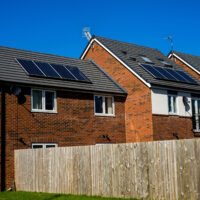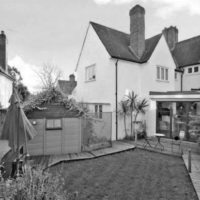Thinking of extending your roof for that extra bedroom or office space? Well you’re not the only one. The ‘don’t move, improve’ trend has soared in popularity in recent years. This comes as no surprise, considering recent research from the Nationwide Building Society states that a simple loft conversion can increase a home’s value by 22 percent.
Proposed changes to the National Planning Policy Framework (NPPF) seem to reflect this trend, now making it easier to add up to two storeys to an existing building. It has also resurrected the idea that permitted development exemptions from planning applications could also apply to rooftop additions.
Roof extensions are popular because they can add a significant amount of extra space without having to extend sideways or dig down. There are a variety of ways to extend your property upwards depending on the type of property you have and where it is situated.
For larger and typically detached residential properties Gable and Hipped roofs are seen as ideal. With the classic upside down V shape, Gable roofs have been a popular choice for a majority of residential properties around the world for centuries now, whilst Hipped roofs have less of a pitch and due to their less complicated structure and erection, have seen a rise in popularity in recent years.
For terraced houses, Mansard roofs have become a huge hit. The french design has particularly increased in areas like Fulham and Hammersmith, where neighbours have banded together to submit joint applications of up to 20 properties, vastly increasing the limited space offered by terraced housing whilst simultaneously avoiding a ‘gapped-tooth’ affect which may impinge on planning permission.
Flat roof extensions are more commonly used for commercial buildings. With barely any pitch, they can be easily constructed and offer various benefits including little impact on obstruction of light and outlook of neighbouring properties. However, with the extension trend rising exponentially, more and more residential properties have seen the use of the flat roofs and shed roofs.
Gambrel roofs are mostly synonymous with barns. However, their ability to provide a significant amount of space to a property mean that they can also be used in residential properties to create extra bedrooms and living spaces. Though this is most likely the case for larger properties not situated within inner city areas due to their ability to obstruct light and outlook from neighbouring properties.
If you are on the fence about a roof conversion, there are some important things to consider. Although some limited roof extensions are possible under permitted development rules, planning permission is required when the extension exceeds specified limits and conditions, including volume, the materials used, its size, bulk and location, if you live in certain designated areas, obstruction of light for neighbouring properties, the involvement of balconies and verandas and so on.
Interested in a roof conversion? Our consultants are experts in planning law and can advise on the various options. Fuller Long have submitted applications for a number of different types of roof conversions across the UK. Call one of our experienced consultants today on 0808 164 1288 or email us at hello@fullerlong.com to find out what we can do for you.
Image Source: https://www.thetimes.co.uk/article/how-the-mansard-roof-is-transforming-londons-space-starved-terraces-07zxc09gd





